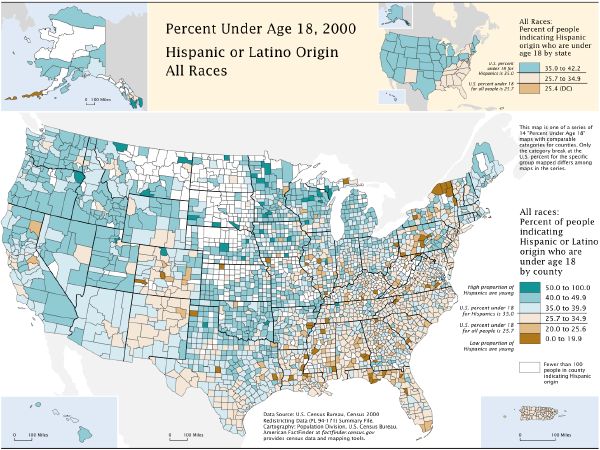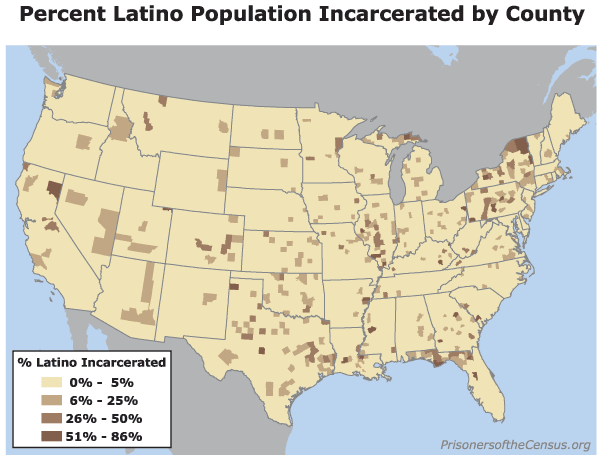Census data asks: Where are the Hispanic children? But it’s the wrong question.
by Peter Wagner, October 11, 2004
Are Hispanics in rural New York, Florida, Pennsylvania, Michigan and other rural places not having children? Or are these the new retirement hotspots for Hispanics? Those are also the wrong questions. The question really should be: Where are the fathers?
By way of background, 25.7% of people of all ethnicities in the U.S. are under the age of 18. This varies from place to place, in part because of where people of certain ages choose to live. For example, many older people move to Florida, so that state has a very low proportion of young people.
Nationally, Hispanics are a much younger population than the total U.S. population, as 35% are under the age of 18. Unfortunately, it is hard to tell whether there are any relevant age-based trends in Latino migration for economic or social reasons because the Census Bureau’s data is overwhelmed by the number of adult Latinos moved to rural counties against their will for purposes of incarceration.
Figure 1 is a map from the Census Bureau’s Mapping Census 2000: The Geography of U.S. Diversity showing the percent of the Hispanic population in each county that is under age 18. This map of Hispanic populations with few children looks a lot like a corresponding map of communities that import large numbers of Hispanic prisoners. (See Figure 2.) The maps of the total population and the White population by age do not show the same correlation with our incarceration maps. It is the data for Blacks and Hispanics that is suffering from this Census glitch.

Figure 1. Many counties (in dark brown) report a significant Latino population, but report few Latinos under the age of 18. In most of these cases, this is not the result of people deciding not to have children, it’s the result of the Census counting large Hispanic prison populations as residents of counties that otherwise do not have a significant Hispanic population. (Map source: U.S. Census Bureau, Mapping Census 2000: The Geography of U.S. Diversity.)

Figure 2. The Census reports that many counties have a large percentage of their Latino population incarcerated in correctional facilities.
When retirees pull up roots and move to Florida, they set down new roots of residency in their new homes. But prisoners don’t become a part of the local community, so it makes little sense for the Census Bureau to credit the prison towns with their presence. The best solution, and the only one that would allow legislative districts to be drawn more fairly, would be for the Census Bureau to count prisoners as residents of their pre-incarceration addresses.
Anything less offers a misleading portrait of U.S. diversity.
Source: Too Big to Ignore: How counting people in prisons distorted Census 2000 by Rose Heyer and Peter Wagner, April 2004



